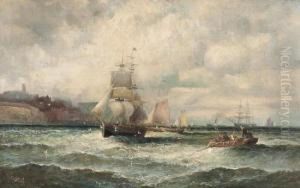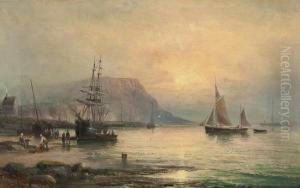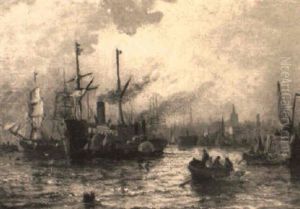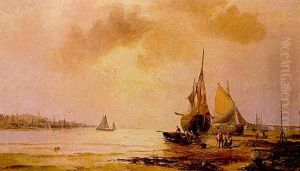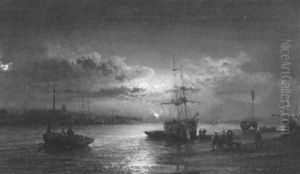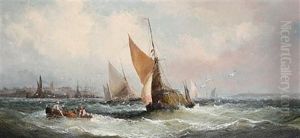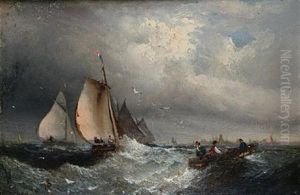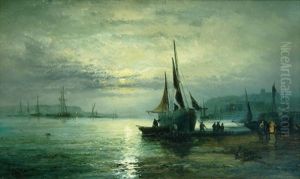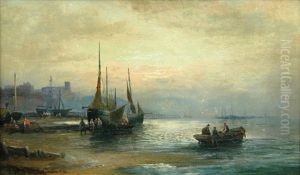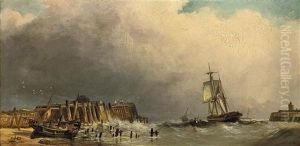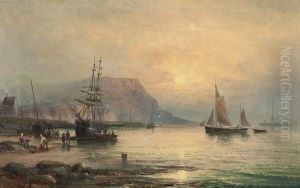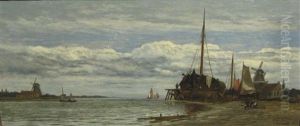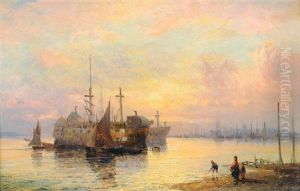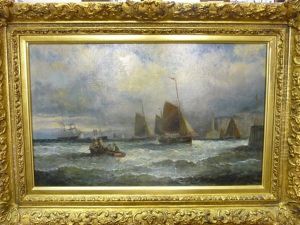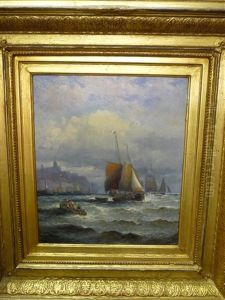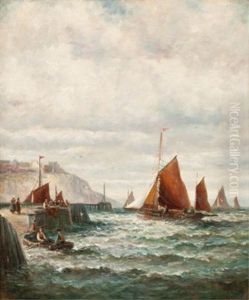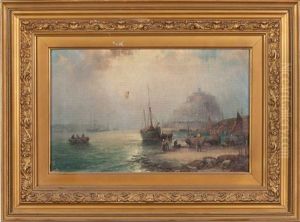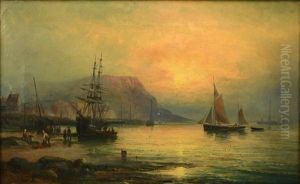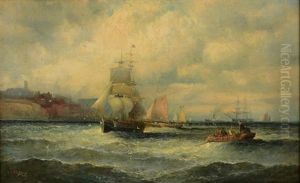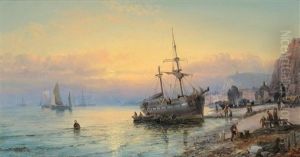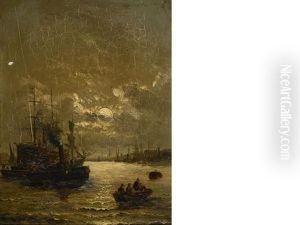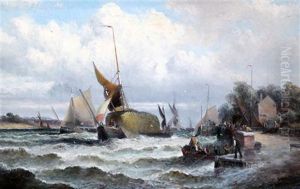Charles Thornley Paintings
Charles Thornley was a British marine painter who flourished during the 19th century, an era that witnessed a significant interest in landscape and maritime art. Born in 1833, Thornley's work reflects a deep fascination with the sea and the majesty of ships, a theme that resonated strongly in the Victorian period, a time when Britain's naval power and maritime trade were at their zenith. His paintings capture the dynamic and often perilous relationship between the sea and those who ventured upon it, whether for commerce, exploration, or warfare.
Thornley's career spanned several decades, during which he developed a style that was deeply rooted in the traditions of British marine painting, yet also showed his unique sensitivity to light, atmosphere, and the nuanced moods of the sea. His works often depict ships battling against the elements, serene coastal scenes, or busy harbors, alive with the hustle and bustle of maritime life. These paintings not only showcase his technical skill but also his ability to evoke emotion and narrative, drawing viewers into the scenes he portrayed.
Throughout his life, Charles Thornley remained an active member of the British art community. Though not as widely known today as some of his contemporaries, such as J.M.W. Turner or John Constable, Thornley's work was well-regarded in his time, and he exhibited at various prestigious venues, including the Royal Academy and the British Institution. His paintings are now considered important contributions to the genre of marine art and are collected and appreciated by those who have an interest in the sea and the history of British art.
Charles Thornley passed away in 1918, leaving behind a legacy of work that continues to be studied and admired. His paintings not only provide a window into the maritime culture of his time but also serve as a testament to the enduring appeal of the sea as a subject for artists. Thornley's ability to capture the ever-changing moods of the ocean and the intricacies of ships and their sails makes his work a valuable part of the history of British art.
